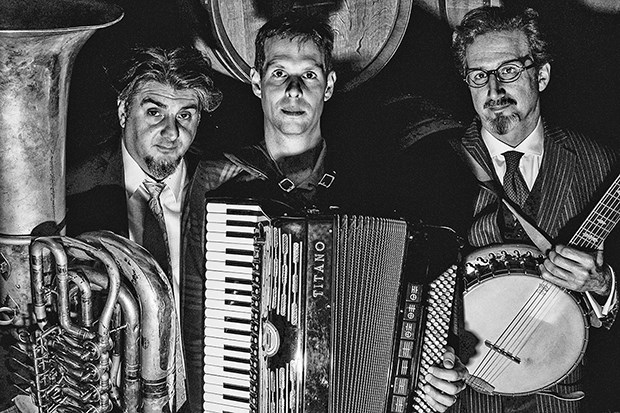Musette Explosion, Saturday, Sept. 26, 8 p.m. at Kay Meek Centre, 1700 Mathers Ave. Tickets: $35 each, or $100 for a table of four, available at kaymeekcentre.com.
At 18-years-old, Will Holshouser was playing piano in his college jazz band when, one day, a friend gave him a quasi-gag gift that would change his life.
"It was this musty old accordion, probably from the '40s, and it was not in good shape, but right away I loved the sound. There was something magical about it. I picked it up and I felt like I was suddenly in a circus."
The portable instrument was small enough to take on the subway. It sat against his chest when he played, allowing the bellowing sound to vibrate through his body. And it opened a door to a world of folk music Holshouser had never before explored. "It was such a different feeling from playing the piano."
After college, the Arkansas native focused on the accordion. At first, he learned by ear from recordings, but started taking proper lessons when he moved to New York in the early '90s. Today, the Brooklyn-based musician, composer and improviser tours regularly with jazz violinist Regina Carter and her band, he is a member of a couple of trios and he has played with clarinetist David Krakauer, the New York City Ballet, the Brooklyn Philharmonic Orchestra, and many others.
As an accompanying artist, it's difficult to explore the range his instrument is capable of. That's one of the reasons he formed Musette Explosion, a trio consisting of himself on accordion, Matt Munisteri on acoustic guitar, and Marcus Rojas on tuba. The group's repertoire is based on traditional French musette, a dancehall genre that puts the accordion front and centre. They play musette waltzes written in the '20s through to the '40s in addition to some of Holshouser's own compositions that use the Parisian musette style as a reference point.
The group was born after a serendipitous meeting on a subway platform in the late '90s. Holshouser and Munisteri were both headed home from gigs with different bands and Holshouser stopped to jam with a busker who was playing the accordion.
"Matt heard us playing and he had been thinking he'd like to play with an accordionist, so he and I exchanged info and got together," Holshouser says. As it turned out, they shared a mutual affection for French musette.
"He's a master of vintage acoustic guitar styles," Holshouser says of Munisteri. "The French musette tunes, for me and for Matt, were a good way to learn about what sounds our instruments could make."
The pair teamed up with a few different bassists, "but we felt like the low-end role in the band needed to be a little bit more flexible." Holshouser knew of Rojas through the New York music scene and was a big fan of the classically trained tuba player who had worked with some of the biggest names in avant-garde jazz.
"We didn't want to just get a tuba player in the band because we thought it was cute. We wanted to play with Marcus because he's a very special musician. He's a master of his instrument, but he's also a brilliant improviser," Holshouser says, describing Rojas' expert ability to coax a range of textures and sounds out of his horn. "It might sound like the wind blowing or a bird or a whale or something like that."
The Musette Explosion trio is unquestionable unique in its instrumentation.
"The organism that we make together is sort of a shape-shifter. It can do a lot of different styles and take on a lot of different forms, just with these three goofy little instruments," Holshouser says, quickly adding, "I say goofy, but it's not a joke and it's not a gimmick."
The three members all have busy careers backing up other artists. Musette Explosion gives them the freedom to test the limits of their respective instruments. "One reason we like playing together is we like to explore all the possibilities of what all our instruments can do."
Holshouser explains that French musette was heavily influenced by early-20th-century American jazz, so although it emerged in a foreign country, it has always felt somehow familiar to his ears.
"Apart from just the sheer beauty of the tunes and the fascinating tambours and expressive sounds that the players on those recordings could get out of acoustic guitars and accordions, there's also this double-layered familiarity, yet newness," he says. "Musette is kind of like the French cousin of jazz."
His own compositions explore and expand on the traditional French dance music.
"One of the tunes that we play is a minor key waltz, but we slowed it down and I used more jazz harmony in the chords. I still try to make the melody a very whistle-able, engaging melody in the way that a musette melody would be," he says. "It's sort of a little love letter to the musette style, postmarked in Brooklyn, New York."



